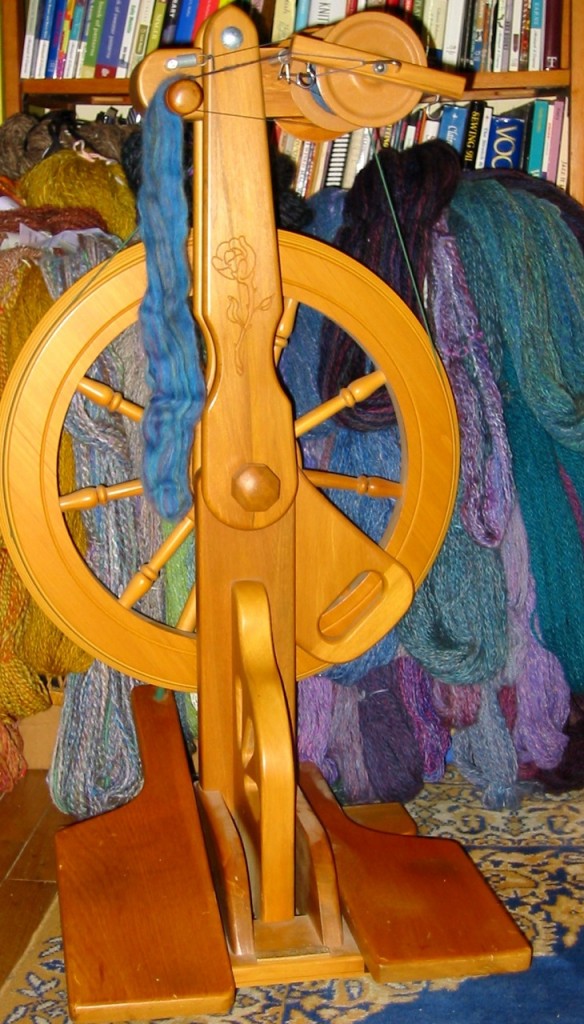 Happy Saint Distaff’s Day! The fiber arts community celebrates this holiday, also known as Roc Day, on January 7 each year. It is said to be the day when women traditionally resumed spinning after the twelve days of Christmas. It happens that I haven’t been spinning for the last couple of weeks since I was finishing a late knitted Christmas gift, but I never understood why women in general would stop spinning for the holidays. I found some context in a New York Times article about winter solstice:
Happy Saint Distaff’s Day! The fiber arts community celebrates this holiday, also known as Roc Day, on January 7 each year. It is said to be the day when women traditionally resumed spinning after the twelve days of Christmas. It happens that I haven’t been spinning for the last couple of weeks since I was finishing a late knitted Christmas gift, but I never understood why women in general would stop spinning for the holidays. I found some context in a New York Times article about winter solstice:
While Roman Christianity was the dominant culture in Western Europe, it was by no means the only one. By millennium’s end, the Danes controlled most of England, bringing with them “Yule,” their name for winter solstice celebrations, probably derived from an earlier term for “wheel.” For centuries, the most sacred Norse symbol had been the wheel of the heavens, represented by a six- or eight-spoked wheel or by a cross within a wheel signifying solar rays.
The Norse peoples, many of whom settled in what is now Yorkshire, would construct huge solar wheels and place them next to hilltop bonfires, while in the Middle Ages processions bore wheels upon chariots or boats. In other parts of Europe, where the Vikings were feared and hated, a taboo on using spinning wheels during solstices lasted well into the 20th century. The spinning-wheel on which Sleeping Beauty pricks her finger may exemplify this sense of menace.
Now that the danger is over, I think I will do some spinning.